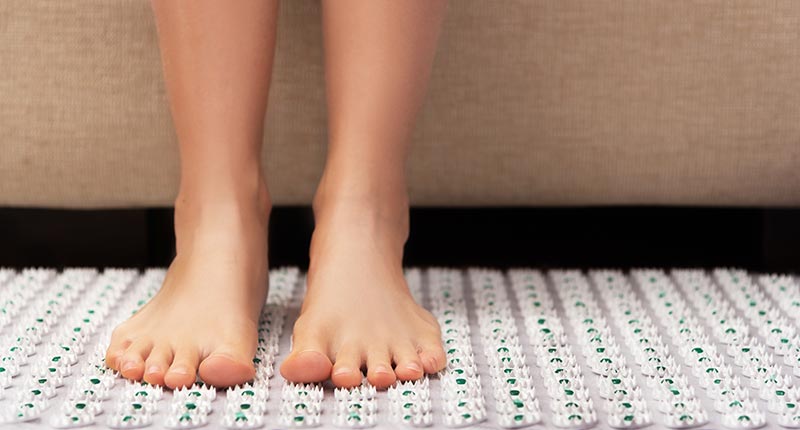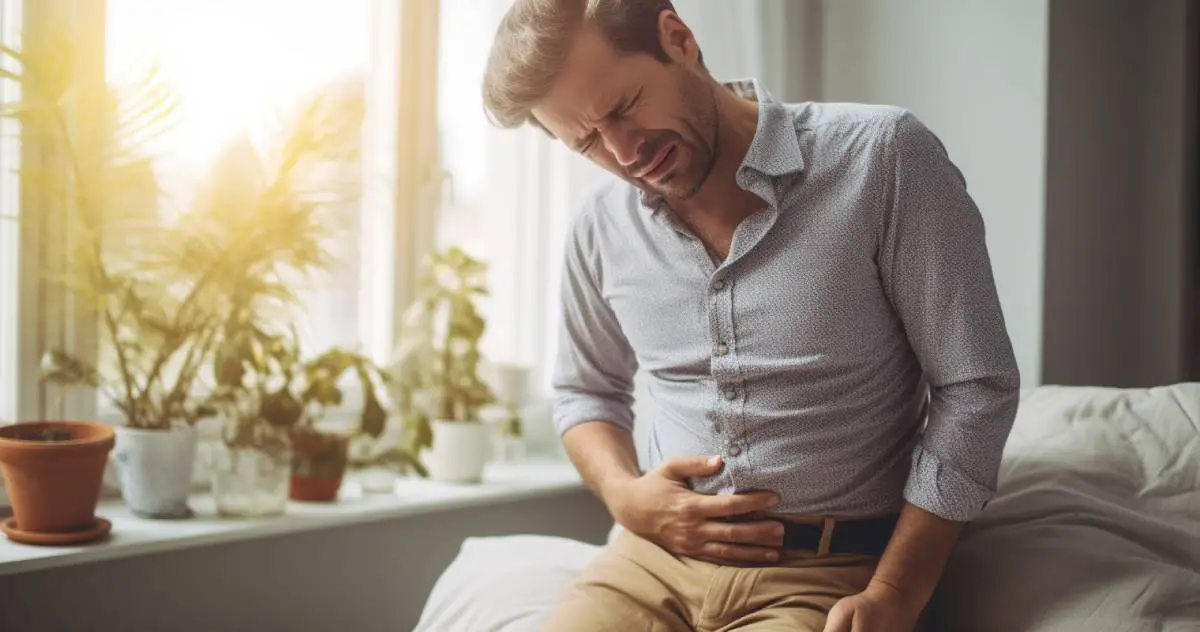There are a variety of autoimmune diseases that manifest as inflammation in specific organs and even in entire systems of the body. Autoimmune inflammation occurs when the natural defenses in the body can’t differentiate between your own cells and foreign cells, causing the immunological system of the body to attack its own organs and other healthy tissues. There’s growing interest in the effects of TCM acupressure in autoimmune inflammation cases since it’s a health condition that has no known cure.
Autoimmune diseases can manifest in different parts of the body. According to Dr. Ana-Maria Orbai from the Johns Hopkins Arthritis Center, the most common autoimmune disorders in women are:
- Rheumatoid arthritis
- Lupus
- Psoriatic arthritis
- Psoriasis
- Thyroid diseases
Besides there, other varieties of autoimmune disorders commonly seen in clinics are multiple sclerosis, Sjogren’s syndrome, Hashimoto thyroiditis, Graves’ disease, and Crohn’s Disease.
According to the renowned Traditional Chinese Medicine practitioner and teacher, Giovanni Maciocia, the treatment for autoimmune diseases varies depending on each specific case. Usually, it includes the employment of acupuncture treatments as well as Chinese phytotherapy. Some of the herbs prescribed by TCM doctors for autoimmune inflammations, such as chang shan, have been scientifically proved to have a compound that can inhibit inflammation in autoimmune responses.
The role of acupressure in autoimmune inflammation is yet to be properly studied in the West, however, in China, doctors and patients broadly practice it at official sanitary establishments, and it is considered an effective treatment that can spare patients from having to undergo treatments with toxic medications unnecessarily.
Discomfort Caused By Autoimmune Diseases Can Be Relieved By TCM

The Chinese doctor Liu Jiayou, a traditional Chinese medicine physician in the Linsen Hospital of Beijing Union Medical College, said that he had clinically treated a lupus erythematosus patient with signs of dry mouth and dry eyes. After 1 to 2 months of traditional Chinese medicine treatment, those symptoms improved. Commonly used prescriptions in traditional Chinese medicine include Qiju Dihuang Pill, Ganluyin, etc. The medication needs to be adjusted according to individual conditions, not limited to a certain prescription. Dr. Liu Jiayou explained that Sjogren’s disease, also known as Heugland’s syndrome, most commonly affects the function of the lacrimal and salivary glands.
Primary Sjogren’s syndrome refers to patients with no other rheumatic immune diseases other than Sjogren’s disease. Secondary disease refers to other rheumatoid immune diseases, including rheumatoid arthritis, lupus erythematosus, and scleroderma, in addition to xerosis, of which rheumatoid arthritis is the most common.
Insufficient production of tears or saliva is caused by persistent inflammation of these glands for reasons still unknown. In addition to this, other glands in the body may also be affected, drying out the skin, hair, windpipe, or vagina. There are also many drugs that can cause dryness as well, such as antihistamines, anti-schizophrenia or depression drugs, sleeping pills, oral contraceptives, diuretics, painkillers, etc. The longer the medication time and the higher the dose, the more severe the symptoms will be.
Acupuncture can help improve the dryness in the eyes. According to Dr. Liu Jiayou, acupuncture at acupressure points for skin inflammation, such as Bl-1(Jingming), Bl-2(Zanzhu), ST-1(Chengqi), TE-23(Sizhukong) and LI-4(Hegu) can promote tear secretion and circulation around the eye area.
Acupoint: Bl-1 (Other Names: Urinary Bladder-1/Jing Ming/Bright Eyes)
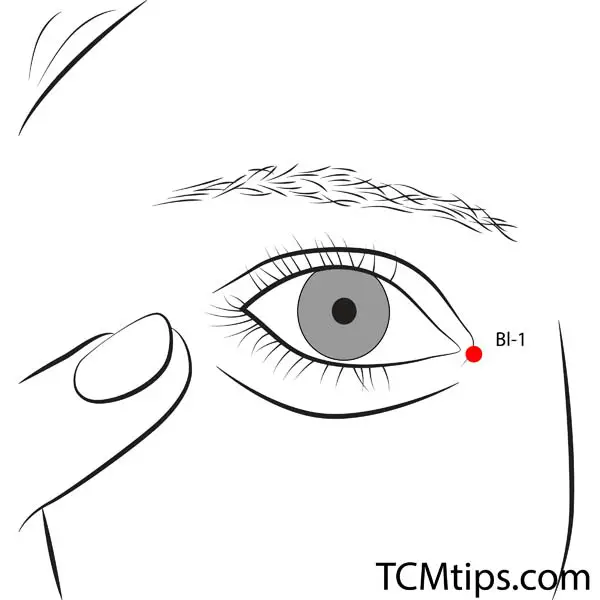
Jingming is located in the inner corner of both eyes, slightly apart from the end of the orbit. To stimulate this acupoint, first, make sure you have spotted the right place, then apply gentle and firm pressure, moving your index or thumb in circular movements so as to exert a continuous stimulation for about a minute or two. You can repeat it from two to seven times on each side.
Bl-1 Jingming is also featured in this other post about the Feng Chi point.
Acupoint: Bl-2 (Other Names: Urinary Bladder-2/Zan Zhu/Gathered Bamboo)
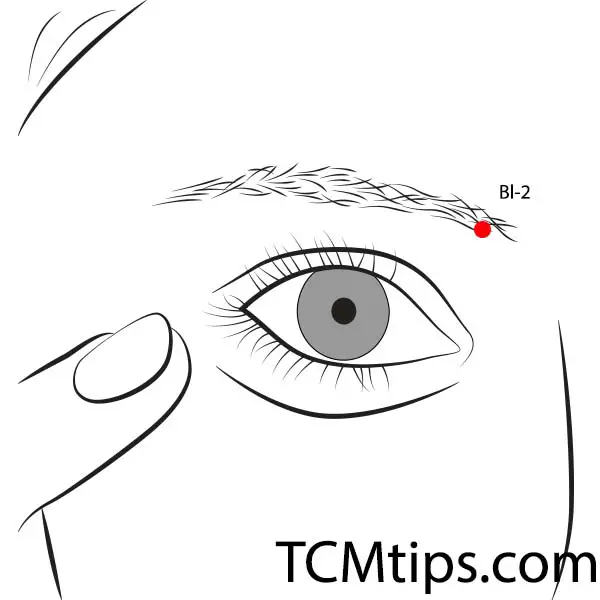
Zanzhu can be found above and parallel to Jingming, on the inner side of the eyebrows. To apply acupressure at this acupoint, you can use the same technic described for the previous point. Since this acupoint’s location is deeper inside the skin and there are more tissues around this area, you can apply a slightly stronger pressure depending on your pain threshold.
Remember, in order for the acupressure to work, it isn’t necessary to apply a lot of pressure at once, but rather to use a continuous steady stimulation.
This acupoint is included in the acupressure points for facial paralysis as well.
Acupoint: ST-1 (Other Names: Stomach-1/Cheng Qi/Tears Container)
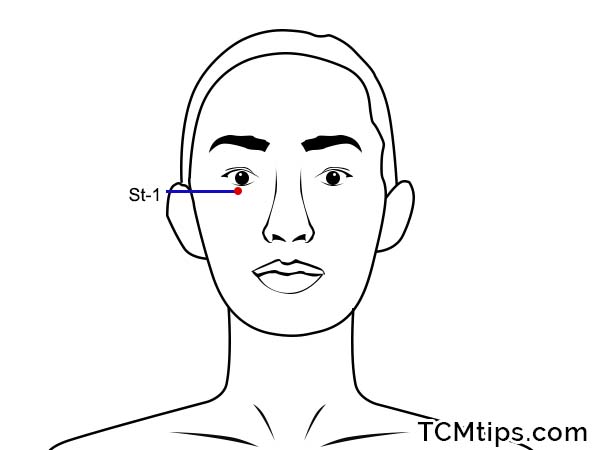
Chengqi can be found below both eyes, on top of the orbital margins, and parallel to the pupils. The stimulation of this point can be done in a similar manner as Jingming and Zanzhu, applying continuous and steady pressure on each side for as long as you can or stimulating in rounds.
Whereas the two previous acupoints belong to the Bladder meridian, Chengqi belongs to the Stomach meridian, which connects to this Fu (bowel) in its inner path.
Chengqi is one of the points used in acupressure for seborrheic dermatitis besides being used for acupressure in autoimmune inflammation.
Acupoint: TE-23 (Other Names: Triple Energizer-23/Si Zhu Kong/Silken Bamboo Hollow)
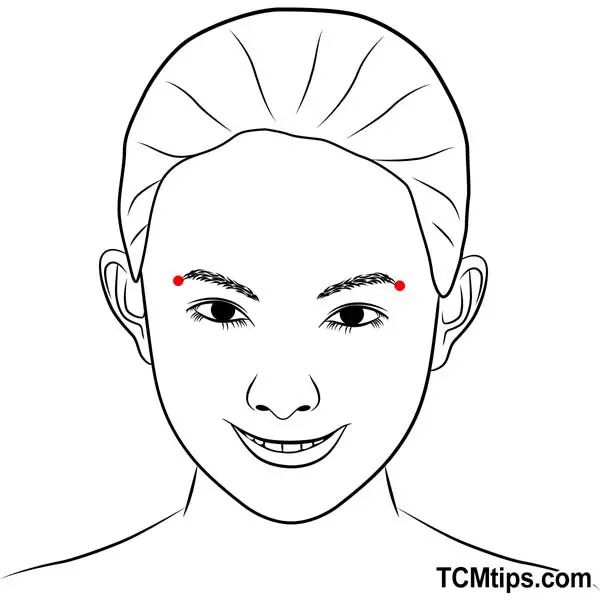
Sizhukong is the twenty-third of the twenty-six points of the San Jiao meridian. It can be located on the lateral end of the eyebrows in the bony depression where there is a suture. To find this point will need to explore the area using your index finger until you find the spot where it feels unleveraged. Be careful to find the exact spot described previously since there are other points located very close to Sizhukong.
This is one of the acupressure points for dry eyes as well.
Acupoint: LI-4 (Other Names: Large Intestine-4/He Gu/Joining Valley)

Hegu is one of the top acupuncture points used for analgesic purposes as well as for illnesses caused by exposure to the elements. It’s an easy-to-find acupoint. With your hands facing down, it is located between your thumb and index fingers, closer to the index and approximately parallel to the middle of the bone.
As Hegu is located deeper inside the tissues around the thumb and index fingers, you can confidently apply a good amount of pressure on this acupoint. While you are pressing LI-4, you will probably feel a sharp painful sensation. It’s a good idea to proceed with the stimulation by pressing the acupoints for about 5 seconds and then releasing for 3 seconds, about 10 times on both the left and right sides.
Warning: The stimulation of LI-4 (Hegu) is counter-indicated for pregnant women as it can induce childbirth. It’s safe to use Hegu for acupressure in autoimmune inflammation cases in non-pregnant women only.
This is a pressure point for tonsils as well.
 P. Sze
P. Sze 




